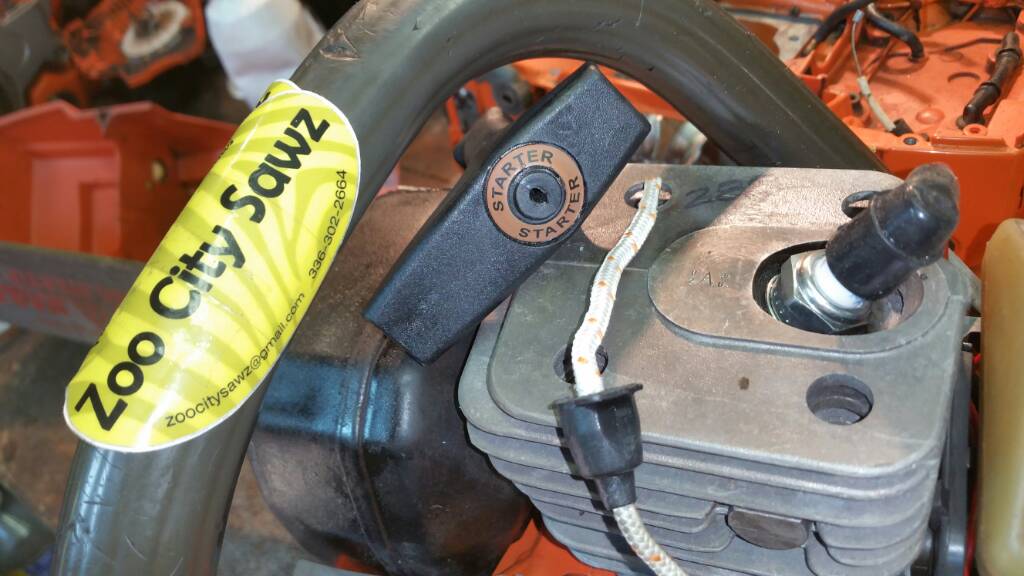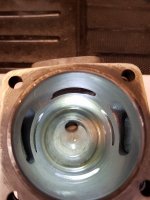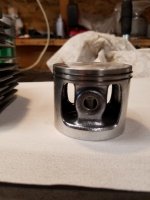Yes Sir, the whole trick to the game be it saws, 250r's or Top Fuel Dragsters is to run as low of octane as the engine can run without detonation to make the most power. You can always run higher octane than the minimum required and it won't hurt a thing, but due to the nature of higher octane fuels that have higher flashpoints, slower burn rates, and remain stable to higher compression ratios, you will actually lose a little bit of power and performance. Go the other way around and dump 87 oct into an engine that requires 110 oct minimum and things will get nasty for your engine and your wallet in a hurry. I love hearing people tell me how they tried some 110 oct in their stock (fill in the blank) that requires 87 oct minimum and they could "feel the difference". LOL!

The car I drive now doesn't call for any special octane rating, but it's clickly/sizzly on 87, and doesn't make those subtle sounds on 93 while gaining a few MPG and having noticeably more torque. I still tend to just run it on 87 as it's cheaper.
Could high octane gas be advantageous for getting high torque at low rpms since there's more time to burn fuel? Might also burn cleaner than just running low octane rich?
Good post Doc. In addition to heating the charge closer to combustion temp, higher compression also gives you a harder push on the piston. Which gives the crank more inertia to keep rollin once the burn is completed. The end result being a very real increase in torque. Extreme example would be Diesel engines. Ridiculously high compression with torque typically double its HP output but a low rpm range. Not trying to side track the thread with rattlers, just an example. I think this is a given that most understand but figured I'd throw it in here. Finding the right amount of compression for a given saw is like everything else in this series, we have to experiment to find that balance.
More compression should also speed up the burn rate correct? Because the density of fuel/air molecules is higher, closer together, so the flame travels faster. Theoretically adding surface area such as somewhat large grooves to the combustion chamber can increase the burn rate too because the groves will cause turbulence helping to keep the fuel & air well mixed and throwing the flame ahead faster. See the methane in sewer explosion episode of Mythbusters to get an idea of where my idea comes from. Though adding surface area would not be ideal for a chainsaw engine.
Rule of thumb for making power. High compression for gas motors and low compression for diesels.
Play with a few diesels back in the day. Used to lower comp a bit so you could get more fuel without
increasing cylinder pressures. Also play with cam timing. Especially on the 855 Cummins with cam
operated injectors. Slow the cam down which is retarding. That lowered cylinder pressures a bit and
then you can add more fuel. More fuel, more air, more power. Had some mean running Cummins
back in the day.
Something I was wondering recently, how do you get the most power with the most durability? Low compression and lots of fuel, or would high compression and less fuel do the same? Of course there is a max pressure number on the parts that you don't want to exceed as it will cause certain failure, though that precise number could get complicated considering materials tend to withstand more pressure if the duration is shorter since there is less time to squeeze or stretch materials far enough that they fail. So really short peak pressures might just pass as a shockwave, but then there's fatigue to consider from all that shock beating.
To use high compression and experience extreme peak pressures around TDC or to use low compression and compensate with more fuel to have a high overall average pressure? More compression should have a higher average pressure over the whole power stroke anyway, so would low compression and more fuel just be a waste of fuel? I guess one should aim for the most compression till detonation becomes a problem, then go with more fuel and air from there?
Also I wonder at what point do you guys experience a lot of failures? Can you say XXXpsi is about the limit to get at least a year out of a work saw, or XXXpsi is about the limit to get 20 races before blowing the engine crank or bearings?











